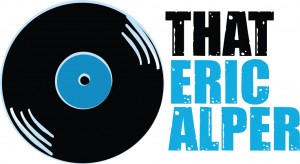Steely Dan’s Can’t Buy a Thrill is one of those rare debut albums that sounds like a band that had already lived a lifetime together. Released in 1972, it introduced the world to Walter Becker and Donald Fagen’s fusion of rock, jazz, and intricate storytelling, all wrapped in sophisticated, sometimes cryptic, lyrics. With hits like Do It Again and Reelin’ In the Years, it climbed the charts and cemented Steely Dan’s place in music history. But behind the polished production and masterful musicianship, there are some fascinating details that even die-hard fans might not know.
1. David Palmer Was Briefly the Voice of Steely Dan
While Donald Fagen’s signature voice became synonymous with Steely Dan, he wasn’t always the band’s primary singer. Early on, ABC Records had concerns about Fagen’s confidence as a frontman, leading to the recruitment of David Palmer. Palmer provided lead vocals on several tracks, including Dirty Work and Brooklyn (Owes the Charmer Under Me). But by the time their next album rolled around, Fagen had stepped fully into the role, making Can’t Buy a Thrill the only record where another vocalist played such a prominent role. Palmer later pursued a songwriting career, penning hits for Carpenters and others.
2. The Album’s Cover Was Banned in Spain
The original artwork for Can’t Buy a Thrill featured a photomontage of a line of prostitutes standing in Rue du Gros-Horloge in Rouen, France. While provocative, it wasn’t out of place for the era. However, Spain’s Francisco Franco regime found the image inappropriate and banned the cover outright. As a result, Spanish pressings of the album featured a tamer substitute: a photograph of the band performing live. In later years, Becker and Fagen jokingly referred to the album’s cover as one of the worst of the decade—though they saved their harshest criticism for The Royal Scam.
3. Jimmy Page Calls This Guitar Solo One of the Greatest of All Time
Reelin’ In the Years boasts one of rock’s most celebrated guitar solos, played by session musician Elliott Randall. The searing lead was recorded in a single take, an almost unheard-of feat for such an intricate performance. Even Led Zeppelin’s Jimmy Page, a guitar legend himself, once called it his favorite solo of all time, ranking it a 12/10. If you listen to the quadraphonic mix of the song, you’ll even hear extra lead guitar parts that were left out of the standard stereo version, making it an essential deep cut for audiophiles.
4. “Do It Again” Features an Electric Sitar and an Unusual Organ
One of the album’s most distinctive tracks, Do It Again, sets the mood with its hypnotic groove and Latin-tinged rhythm. But listen closely to the solos—there’s an unexpected instrument in the mix. Guitarist Denny Dias plays an electric sitar, an instrument more commonly associated with psychedelic rock. Meanwhile, Donald Fagen delivers a “plastic organ” solo on a Yamaha YC-30, which had a unique pitch-bending control that gave it a wavering, almost theremin-like quality. These choices helped define the song’s unique sound, making it instantly recognizable to this day.
5. “Dirty Work” Was Almost Given to Another Band
Steely Dan’s Dirty Work—a smooth, melancholic track about an affair—was nearly given away to a different band altogether. Executives at ABC Records thought it would be perfect for groups like Three Dog Night or The Grass Roots, both of whom had a knack for radio-friendly hits. Becker and Fagen were initially reluctant to include the song on Can’t Buy a Thrill, as they felt it was too conventional compared to their usual sound. But the label insisted, and it ended up being one of the most beloved deep cuts in the Steely Dan catalog, later revived in 2006 with female backing vocalists singing from a different perspective.
Fifty years later, Can’t Buy a Thrill remains a defining debut, a masterclass in musicianship, and a glimpse into what Steely Dan would become. From the studio perfectionism that followed to their esoteric lyrics and jazz-infused compositions, Becker and Fagen would go on to rewrite the rules of rock music. But it all started here, with an album that still sounds fresh, forward-thinking, and absolutely thrilling.







